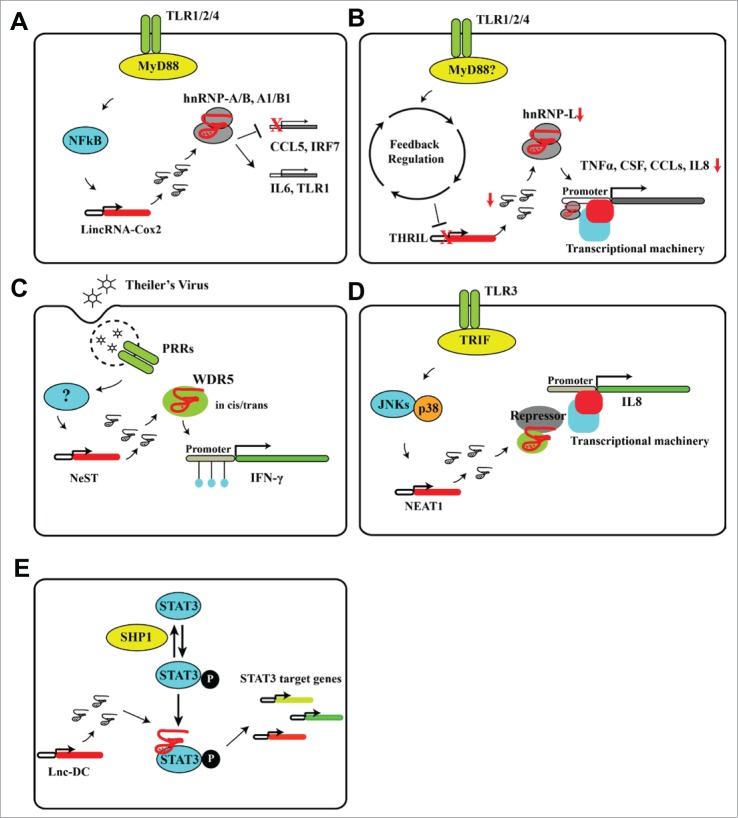Figure 2.
Regulation of innate immune responses by lncRNAs. TLR signaling induces expression of lncRNAs involved in innate immune regulation, including lincRNA-Cox2, NeST, THRIL, and NEAT1. (A) LincRNA-Cox2 interacts with hnRNP-A/B and hnRNP-A1/B1 to form RNPs that can activate (e.g., IL-6) or repress (e.g., CCL5) gene expression. (B) TLR signaling can activate endogenous feedback-regulation networks to limit the potentially damaging effects of excessive inflammation. This downregulates expression of the lncRNA THRIL, which is required for transcription of inflammatory genes. Downregulation of THRIL thus helps to restrain TLR-induced gene activation. (C) Viral infection upregulates expression of lncRNAs, including NeST. NeST interacts with the adaptor protein WDR5 and recruits the chromatin-modifying histone methyltransferase MLL to the target gene locus. Alterations in Figure 2 (See previous page). the local chromatin state can induce or repress expression of target genes such as IFN-γ. (D) Activation of TLR3 signaling induces expression of NEAT1. This lncRNA binds to transcriptional repressor proteins such as SFPQ and thus allows transcription of local inflammatory genes to proceed. (E) Lnc-DC binds with STAT3 to protect it from dephosphorylation induced by phophatases such as SHP1, which leads to increased phosphor-STAT3 and thus activates downstream gene expression.

